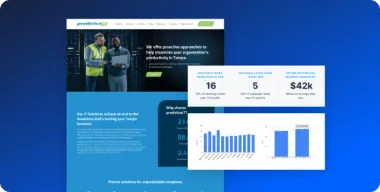If you’ve spent any amount of time looking at developing your company’s SEO strategy, you may have noticed Google has thrown a couple of hostile animals into the mix.
It began in February 2011 with the Google Panda update, and then (as if one cute fluffy animal wasn’t enough,) Google tossed the Penguin update our way — not just once, but three times, during 2012.
The SEO landscape has dramatically changed, and so have the strategies needed to stay in the Big G’s favor. This isn’t the first time, and you can rest assured it won’t be the last time, Google injects a surprising twist into the world of SEO.
It’s no wonder that most business owners would be more confused than a 2003 Google search result, however there is light at the end of the tunnel, and it’s not something you need Google’s latest eyewear to see.
We’re going to look at the top 5 best links that are accessible to your business today. Sure, a link from CNN.com or USA.gov might be more valuable than the links we’ll go over below, however for 99% of businesses and corporations out there, these links are just not possible to get. So without further ado, here’s some practical links (and the strategies for getting these links) below:
1. Press release links
If you’ve been around the SEO circles for some time, you’re well aware of the power of the online press release. The best have been gaming these links for a number of years, however this type of linking strategy is still just as powerful as it has ever been, when used in the right way. Press release links like most links over time, fall into two categories – Great and Not-so-great – There is the option for businesses to push out press releases using cost-effective distribution channels with scale (such as these free press release syndication services,) or using quality paid channels such as PR Web in the states. The ideal strategy here is to use high quality distribution channels that are syndicated out to thousands of media outlets and press contacts – these types of links will guarantee a smile on the emotionally-unstable Google. Here are a few things you need to consider:- Make the press release news-worthy – Create something newsworthy. Play on emotions or play on desires. This is the kind of angle that gets syndicated. Publish content about a new line of products/services, mergers/acquisitions, studies associated with your core business, or current affairs that are affecting either your customers or your industry.
- Use a top-quality press release writer – Hire someone on Elance, or outsource it to Text Broker. You get what you pay for here, so cut back on office supply expenses if things are looking tight.
- Look for international/local opportunities to syndicate your press release – Our business at Net Momentum is Australian based, so working with local businesses requires a local approach. Although the big US press release syndication services are still powerful, particularly for SEO purposes (as well as syndicating to a few local news outlets), a local business approach could be an effective means of generating greater coverage particularly for great local newsworthy content. Here’s a great link for Australian Press Release syndicators.
- In most cases link under Brand/URL anchors – e.g. if your business is called Management Consultants ABC, have your anchor text “Management Consultants ABC” or “https://www.managementconsultantsabc.com”. The reason for this is because you will be generating thousands of links through distributing just one great press release. The one thing that Google have made known through their Penguin update is over-optimisation of anchor text for the keywords you’re trying to rank for. If your ratio of links with the anchor text(s) you’re trying to rank for is too high, Google will slap you harder than this guy, pushing you right off the search result pages. However when it comes to URL’s and Brand Names as the anchor text you can keep this ratio relatively high (around 30-40% of total anchor text links is ideal). Pro Tip: Use ahrefs.com to see your sites external anchor text ratio.
2. Infographics
The new buzz word on the link-building block is infographics. Alright so maybe it’s not quite yet up to the heights of having as much as buzz as the word “app” but it’s making some ground. Infographics are huge for a number of reasons. They’re sharable (you’ll get people linking back to you by sharing them on social media), they’re fun and easy to read – if this article was turned into an infographic I’d probably have more readers – and you can get them on high-authority infographic directories. Although in certain industries such as health, weight-loss and technology they’ve been exploited nearly as much as a Windows security loophole, they’re still very powerful in industries where the first-movers have not quite reached. They are also great for boring industries, if you’re able to make things interesting, informative and fun for those viewing them. Pro Tip: Combine an infographic and a press release together for maximum effect. Simply create a highly-compelling infographic and distribute it via a high-quality press release, and with a little promotional-love on the side, you might just have a winner on your hands! Infographics + syndication on high-authority media outlets can be a great combination!3. Guest blogging
Guest blogging is great, particularly if you’re interesting. Hopefully if you’re still reading this article up to this point, I’ve somewhat achieved my goal. Guest blogging, or writing content for other sites, is a great way to get links back to your site from quality sites that Google loves and hugs with open arms. These sites allow writers to put a link back to their site from inside the ‘author bio box’ or if you’re lucky, even one link in the article contents itself. There are a couple of approaches you can take here: i. Reach out to bloggers/sites yourself This can be done by searching for bloggers or sites in your industry (or industries that would be interested in your content), and asking them if you would be able to write for them. There’s a whole process involved, which can’t be covered in detail here, but check out Neil Patel’s guide to guest blogging here. In short however, the key is to reach out by email or social media to develop a relationship with the blogger/site without just sending out a mass, generic email out to a number of site owners. Understand both the site owner and their audience and see if you can develop an article that would be great for the site. Find content that is not covered by their site but would be loved by their audience, and ask the site owner if you could write a piece of content for them. Create an infographic and see if you can submit this as a guest blogging contribution. Pro Tip: A great way to find sites in your industry to contribute guest posts on is through a Google search. Use the following searches:- + intitle:”Submit blog post”
- OR intitle:”write for us”
- OR intitle:”Submit an article”
- OR intitle:”Suggest a guest post”
- OR intitle:”Send a guest post”
- OR intitle:”Write for us”




